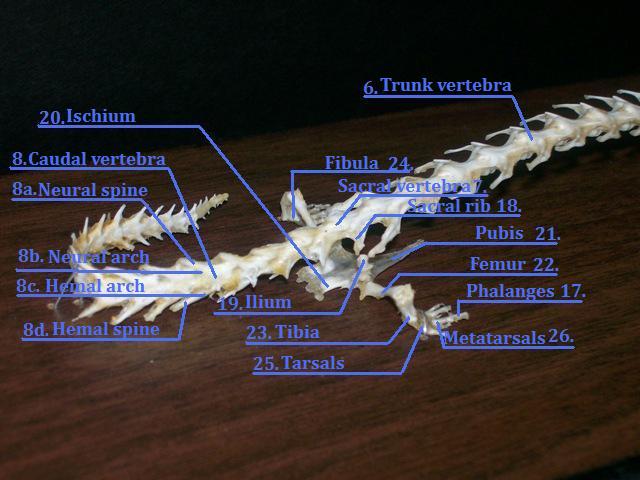
7. Sacral vertebra (lateral and anterior)- articulates with the pelvic girdle by way of its ribs
8. Caudal vertebra- lack ribs; these vertebra have less articulation than do trunk vertebra, which allows for greater flexibility
a. Neural spine- a dorsal projection attached to the body of the vertebra
b. Neural arch- located dorsally, and forms the roof of the neural canal; also bears a neural process
c. Hemal arch- located ventrally in the tail, and allows for the passage of blood vessels
d. Hemal spine- a ventral projection attached to the body of the vertebra
17. Phalanges- the most distally located bones in the forearms and hind limbs; there are four on each forearm and hind limb in the Necturus
18. Sacral rib- articulates the sacral vertebrae to the pelvic girdle
19. Ilium- ossified and extends ventrally from its articulation with the sacral rib toward the acetabulum
20. Ischium- the ventral half of the pelvic girdle is a flat plate; the ischium is the posterior part of the this
21. Pubis- the anterior portion of the pelvic girdle plate; separated from the ischium by the obturator foramen
22. Femur- the largest bone in the hindlimb; has two ridges (cresta ventralis and cresta lateral) that provide attachment for muscles
23. Tibia- lies anteriorly in the crus
24. Fibula- lies posteriorly in the crus
25. Tarsals- six cartilaginous elements in the pes
26. Metatarsals- the proximal bone of each digit in the hindlimb